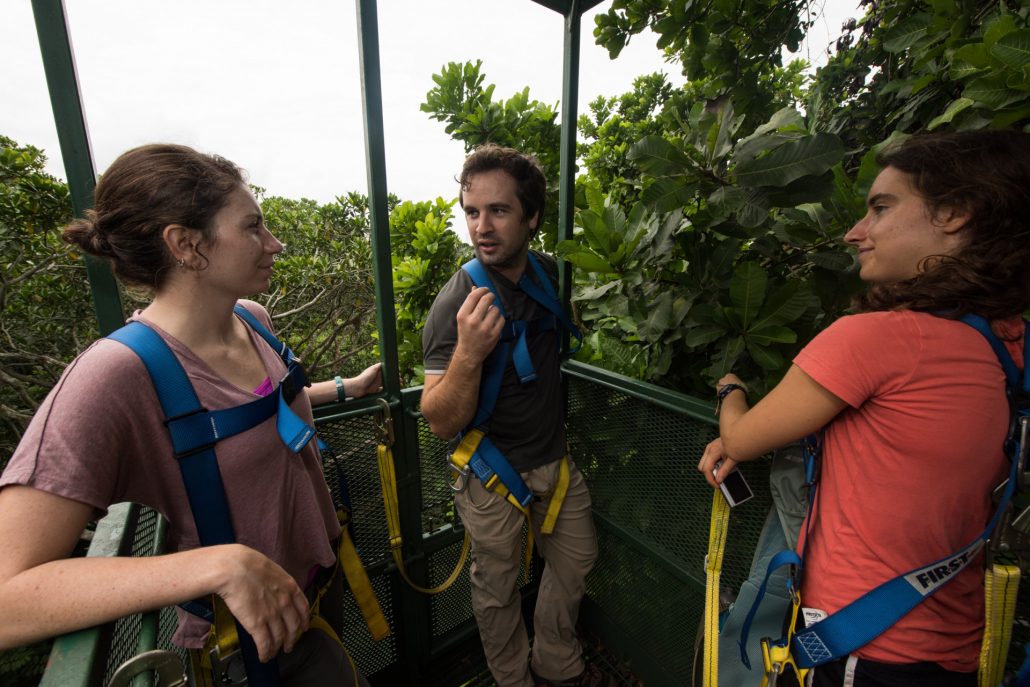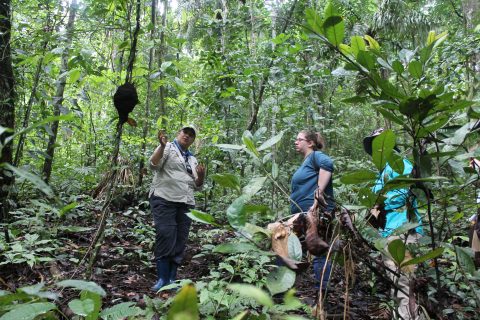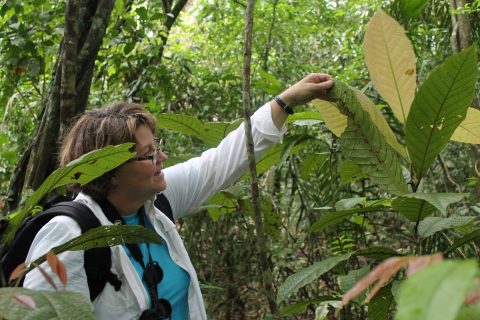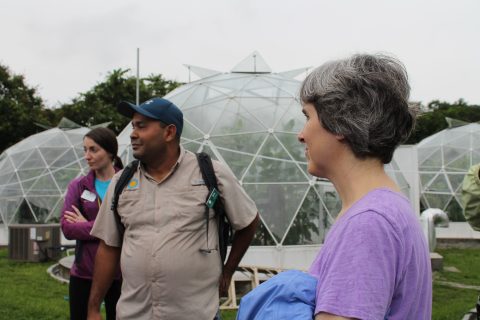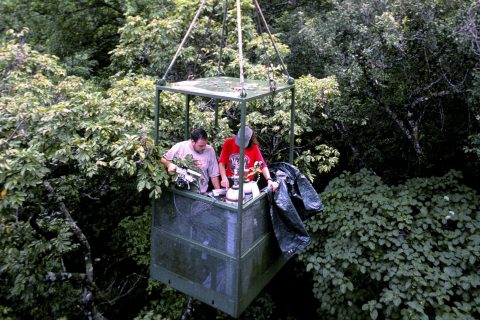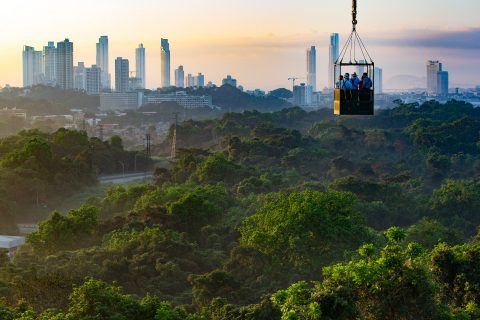Did You Know?
Hey Smithsonian – Where do your scientists go on spring break? Panama!
When people think of the Smithsonian, chances are they think of Washington, D.C. But did you know the Smithsonian has a facility in Panama? The Smithsonian Tropical Research Institute (STRI) was founded with the purpose of increasing and sharing knowledge about the past, present and future of tropical ecosystems and their relevance to human welfare. The presence of the Smithsonian in Panama dates all the way back to the early 1900’s(!) when Smithsonian scientists conducted a study on how the creation of the Panama Canal would impact flora and fauna in the lowland tropical forests of that area. Today, STRI employs 40 scientists, and attracts 1,400 visiting researchers from 50 different countries around the world every year, including more than 800 students, interns, and pre- and postdoctoral fellows. (And no, they aren’t there only for spring break. STRI welcomes scientists year-round!)
STRI’s Director Matt Larsen explains their mission this way: “It is a privilege and an honor to work with STRI’s dedicated and talented scientists, staff, collaborators, and students to assure that we continue to advance scientific understanding in a variety of fields in terrestrial and marine biology, archaeology, anthropology, and paleontology. This work enables us to address a Smithsonian grand challenge: understanding and sustaining a biodiverse planet.”
The Institute is currently working on more than 350 research projects! Here is a sampling of some of the interesting STRI research projects – past and present – have uncovered:
- Vast numbers of tree species in the tropics. If you could identify all the different trees in the Appalachian Mountains ¾some 1,200 miles along the eastern side of United States¾you would find no more than about 50 species of trees. In less than a quarter of a square mile of forest in Panama, there are more than 300 tree species. In a plot only half that size in Ecuador, there are more than 1,000 species! In 1980, STRI researchers on an island in Panama located, identified, tagged and measured more than 200,000 trees in 50 hectares (about 120 acres). It was the first of a worldwide network of 67 long-term forest study sites in 27 countries with 6 million trees representing 12,000 species. That’s a lot of foliage!
- The earth’s past – fossils! Paleontology researchers at STRI revealed the largest snake ever recorded – a boa that reached 43 feet long and more than 3 feet in diameter (whoa!) in Colombia. They also unearthed giant turtles that were six to nine feet in diameter that lived after the dinosaurs disappeared in the tropical forests.
- Microscopic life. One of the most important research programs at STRI focuses on the role of bacteria and fungi in tropical forests. Scientists recently discovered that most tree roots, stems, and leaves in the forest are loaded with thousands of species of fungi called endophytes. These are extremely important for the health of plants in the forest. For example, spraying this fungi onto the leaves of cacao plants can protect the plants from destructive pathogens. If that means more chocolate, we like the sound of that!
- Animal behavior. Of course, STRI has a strong concentration on the study of animal behavior in the tropics. Scientists study the behavior of such diverse animals as crabs, ants, wasps, beetles, butterflies, bats, birds, monkeys and humans. Among other things, they ask whether animals, by changing their behavior, have changed the course of evolution.
- Soil science. So, what’s the dirt on soil? It contains the basic materials for all terrestrial life, no big deal. In fact, soil is sometimes referred to as “the living skin of the earth.” STRI scientists are seeking to understand how carbon and water cycle through tropical forests, how soil nutrients affect their ecology, and how plants are affected by soil properties in Panama and in the Smithsonian Global Earth Observatory forest plots.
Fun fact! Wonder how researchers access the treetop canopy where most of the flora and fauna reside? A STRI scientist came up with the idea of accessing tropical tree canopies with construction cranes. A 50-meter crane, with an equally long boom is used to lift scientists in a metal cage up to the highest branches.
In 2018, WorldStrides became the approved domestic educational travel provider of the Smithsonian. This blog is part of a series, “Hey Smithsonian!” where we ask our friends at the venerable institution questions that dig deeper into this special place and all it has to offer!
Related Articles

The 2024 WorldStrides Student Photo & Video Contest Gallery
When people think of the Smithsonian, chances are they think of Washington, D.C. But did you know the Smithsonian has a facility in Panama? The Smithsonian Tropical Research Institute (STRI) was found...

Girl Scouts: Costa Rica Tour
When people think of the Smithsonian, chances are they think of Washington, D.C. But did you know the Smithsonian has a facility in Panama? The Smithsonian Tropical Research Institute (STRI) was found...

2024 Mérida Pride Parade
When people think of the Smithsonian, chances are they think of Washington, D.C. But did you know the Smithsonian has a facility in Panama? The Smithsonian Tropical Research Institute (STRI) was found...

Rise Up, Take Action: How to Support the LGBTQIA+ Community
When people think of the Smithsonian, chances are they think of Washington, D.C. But did you know the Smithsonian has a facility in Panama? The Smithsonian Tropical Research Institute (STRI) was found...

